New research commissioned by Open Influence shows that influencer (creator) marketing is growing and experimentation is hot.
To break through to the right consumers in 2023, keeping up with the latest influencer (creator) marketing trends and opportunities is important. We’re here to help with that.
Open Influence commissioned an independent research agency to survey a random sample of 150 brand marketing leaders about what’s driving their influencer marketing strategies today, and what’s changing in 2023. The margin of error for the study is +/-8% at the 95% confidence level.
The big themes? Influencer and creator marketing budget allocations are growing, vertical short-form video is winning, and brands are open to experimenting with new trends. The survey also revealed that brands will continue to lean on influencer marketing agencies to run their programs.
10 Key Creator Marketing Trends of 2023
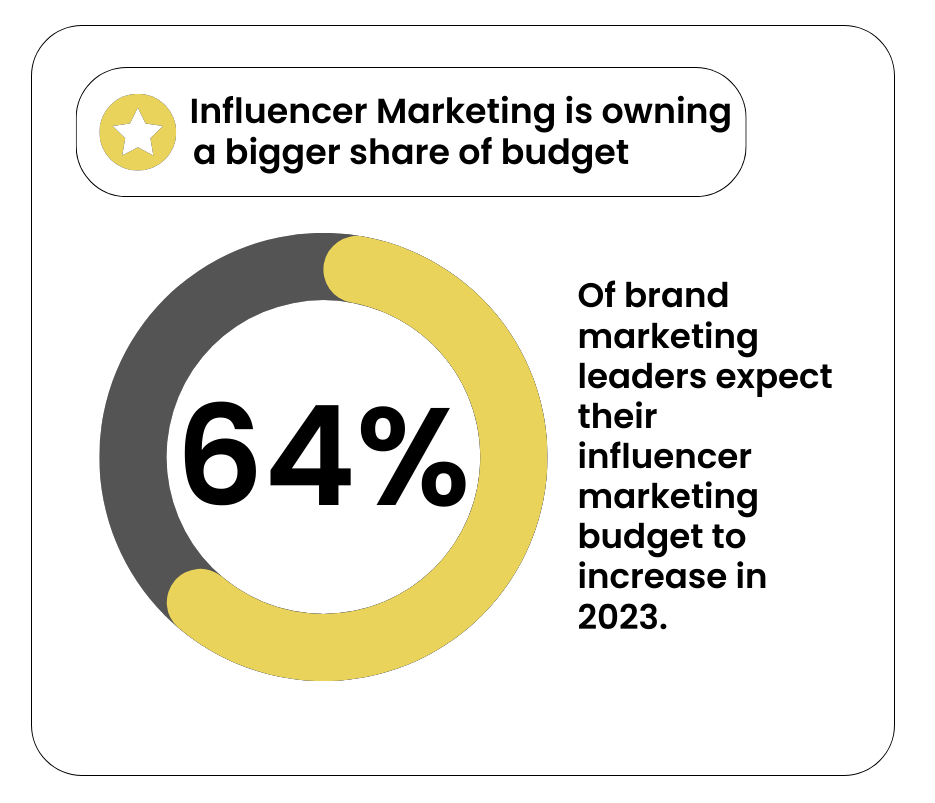
Influencer marketing investments keep growing as creators continue to show their value by delighting audiences and inspiring action.
64% of the brand marketing leaders we surveyed said they expect their influencer marketing budget to increase in 2023.
2. Many brands have opened up their budgets to influencer (creator) marketing.
However, convincing executives to invest in influencer marketing is still a challenge for brand managers.
While 13% of marketers say they allocate at least $1 million to influencer marketing, and 28% allocate between $250k to $1 million, not every company executive is persuaded. 28.6% said selling the idea of influencer marketing to upper management remains a big challenge.
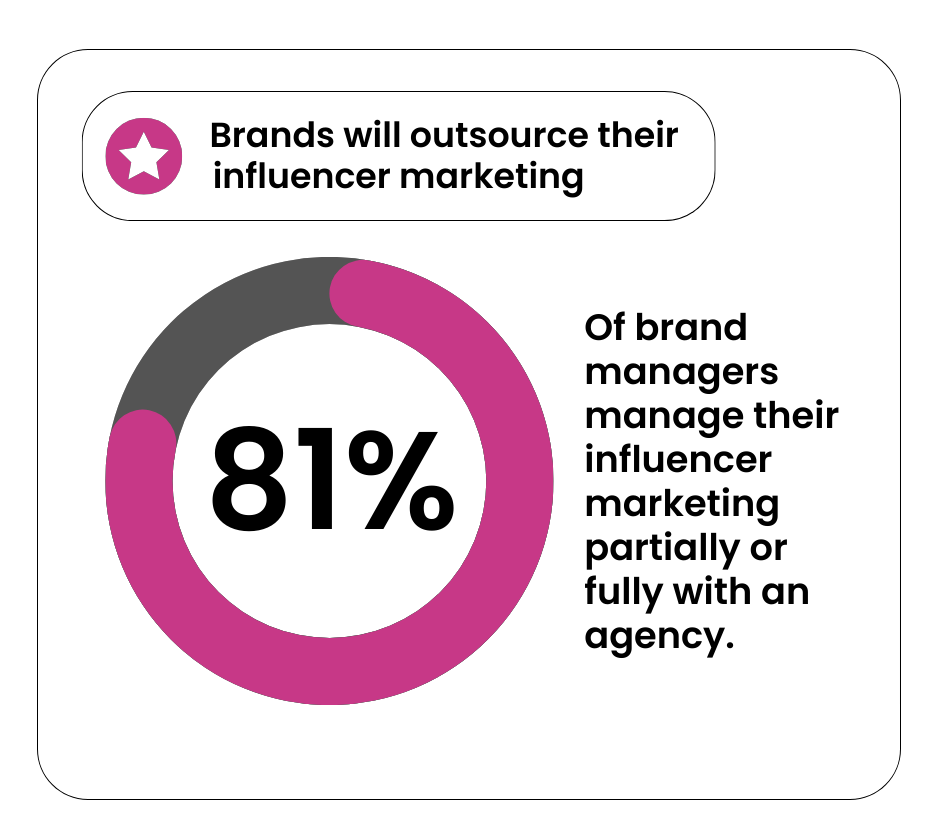
Influencer (creator) marketing involves many layers. Brands that are looking to execute strategic programs, rely on agency partners capable of supporting large-scale campaigns with great success. We believe this contributes to why 81% of brand managers manage their influencer marketing partially or fully with an agency. These are two hurdles marketers encounter when running creator programs in-house:
- 20% said negotiations, contracting, and payment flow
- 17.3% said developing an effective creative strategy
4. Brands want to marry creators, not just date them.
77% of brand marketing leaders prefer long-term relationships with creators. Brand ambassadors and always-on approaches are more valued among marketers because they are cost and time efficient, and allow for stronger connections with audiences as a result of post frequency.
5. Reliable influencer marketing metrics are still tough for brands to get.
Only 40% of brand marketing leaders say it’s definitely easy to get accurate influencer marketing metrics.
“Tracking analytics and optimizing campaign performance is a common challenge we encounter. First party data is always the most reliable, but accessing it can be tricky. This past year, we integrated TikTok and Meta APIs to solve for this. The result? Real-time reporting with platform-direct first party data.”
-Maggie Reznikoff, VP of Account Management
6. Brands are running paid campaigns behind creators.
77% of brand marketing leaders usually run paid social behind an influencer marketing campaign. In addition to hyper-targeting the content to desired audiences, leveraging paid social campaigns allows brands to maximize both efficiency and ROI while driving more users throughout the conversion funnel.
“Paid social has become a pivotal part of any creator strategy, offering more control where the organic algorithms do not. Combining creator assets with a strategic paid media layer is how brands can make their dollars work the hardest.”
-Maggie Reznikoff, VP of Account Management
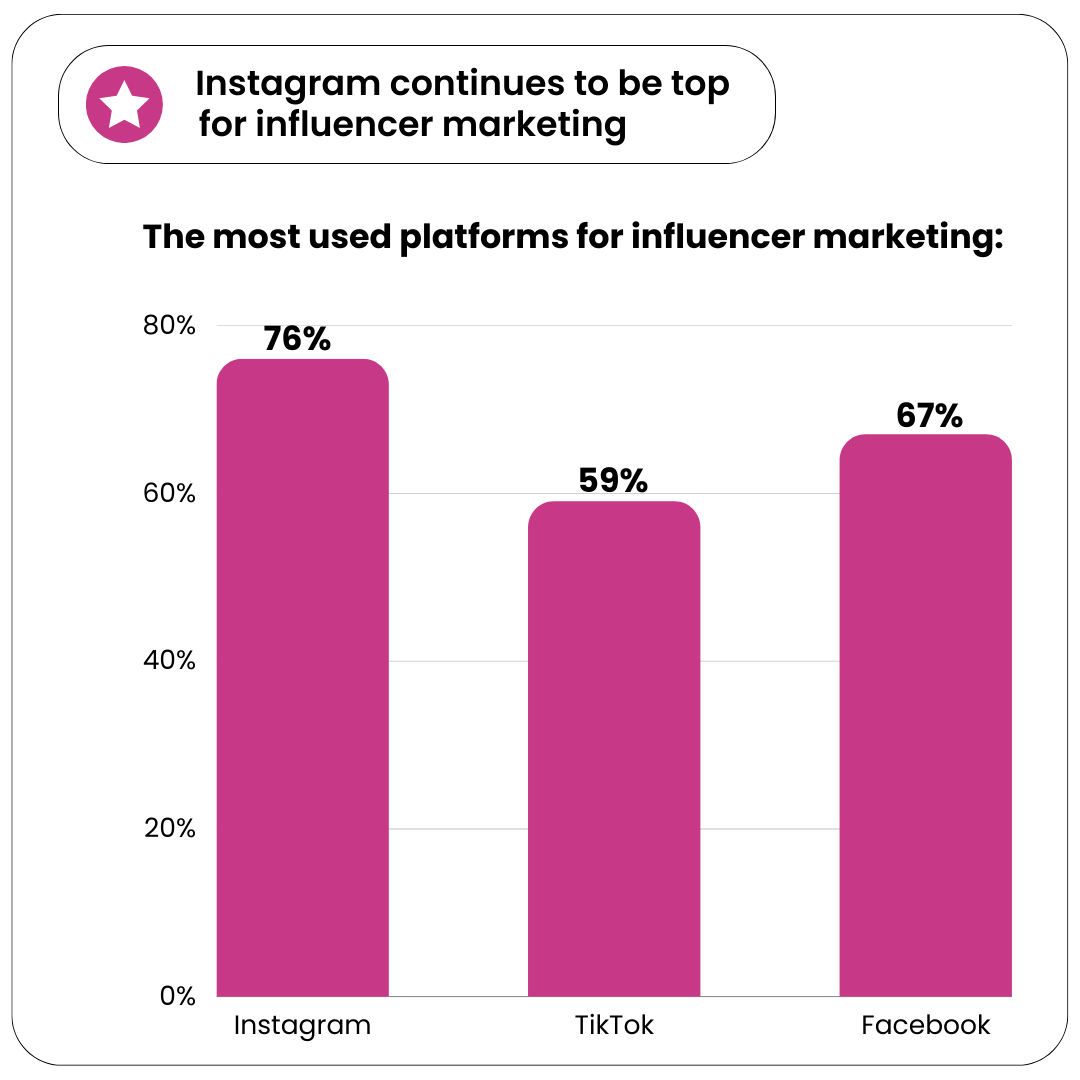
While Instagram has remained at the top, we have seen massive and rapid growth from TikTok in the last few years, and it has joined the leading ranks among other social media giants.
The most used platforms for influencer marketing:
- Instagram / 76%
- Facebook / 67%
- TikTok / 59%
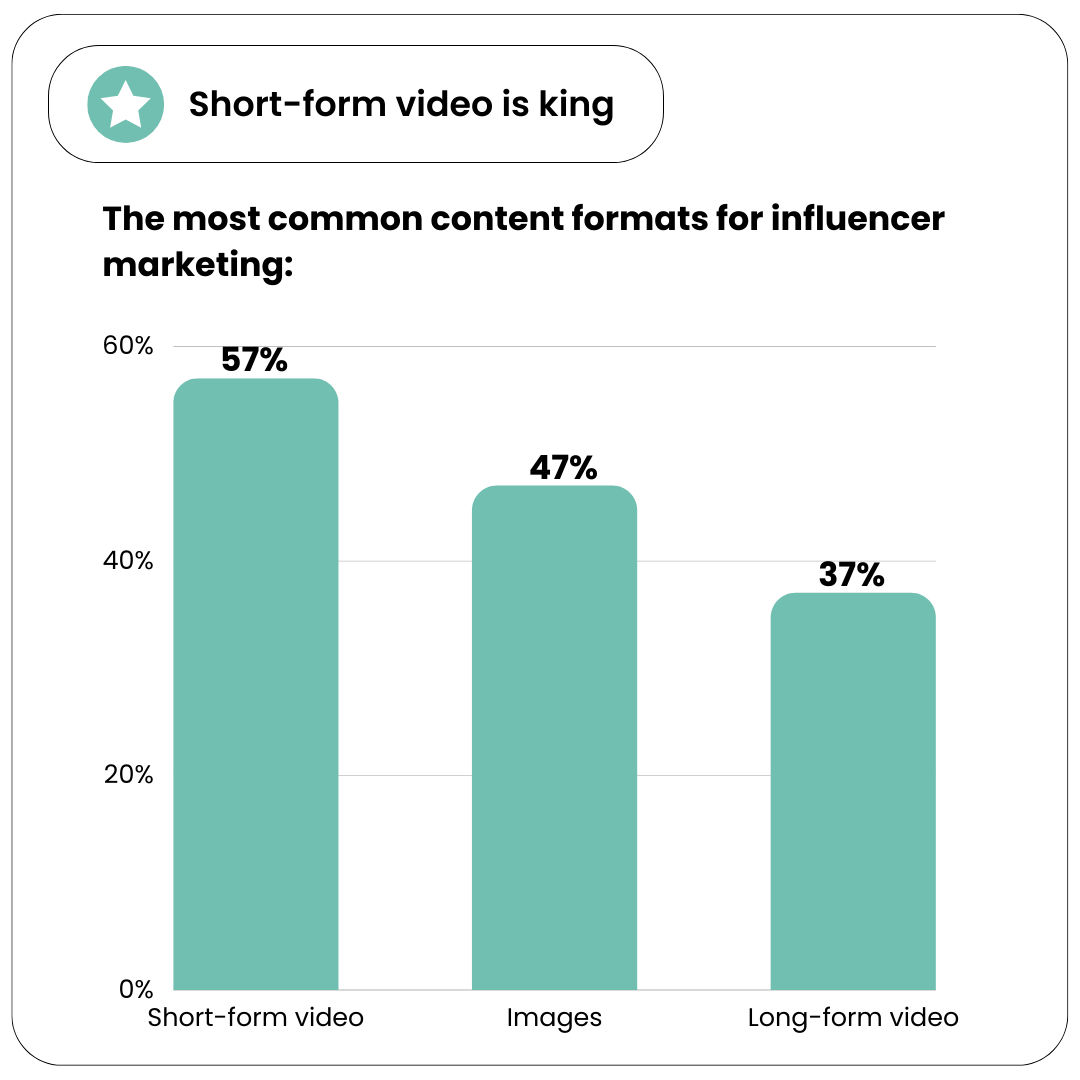
Short-form video has beat out static image posts. The rise of short-form video began with the growth of TikTok, as the platform became highly popular other social media platforms have followed suit, causing it to become the most-preferred and most-consumed type of online content.
The most common content formats for influencer marketing:
- Short-form video / 57%
- Images / 47%
- Long-form video / 37%
“We’re seeing the adoption of short-form vertical video across all key platforms. TikTok walked so IG Reels could run. Other examples of adoption include Youtube Shorts, Pinterest Idea Pins, Snapchat Spotlight, and even Google Ads are now auto-generating vertical video ads using machine learning on existing assets.”
–Maggie Reznikoff, VP of Account Management
9. Brands still select creators primarily by their follower count.
Brands look at follower count 3x more than the expertise of the creator. In fact, some brands (17%) only want to partner with macro creators who have ammassed more than 5 million followers.
What else do brand teams look for when selecting creators?
- Follower Count / 49%
- Engagement Rate / 47%
- Impression Rate / 34%
- Audience Demographic / 45%
- Content Quality / 41%
10. Relatable and aspirational creators are about equally sought after.
Brands are just as likely to choose creators who are relatable (36%) as they are to choose those who are aspirational (35%).
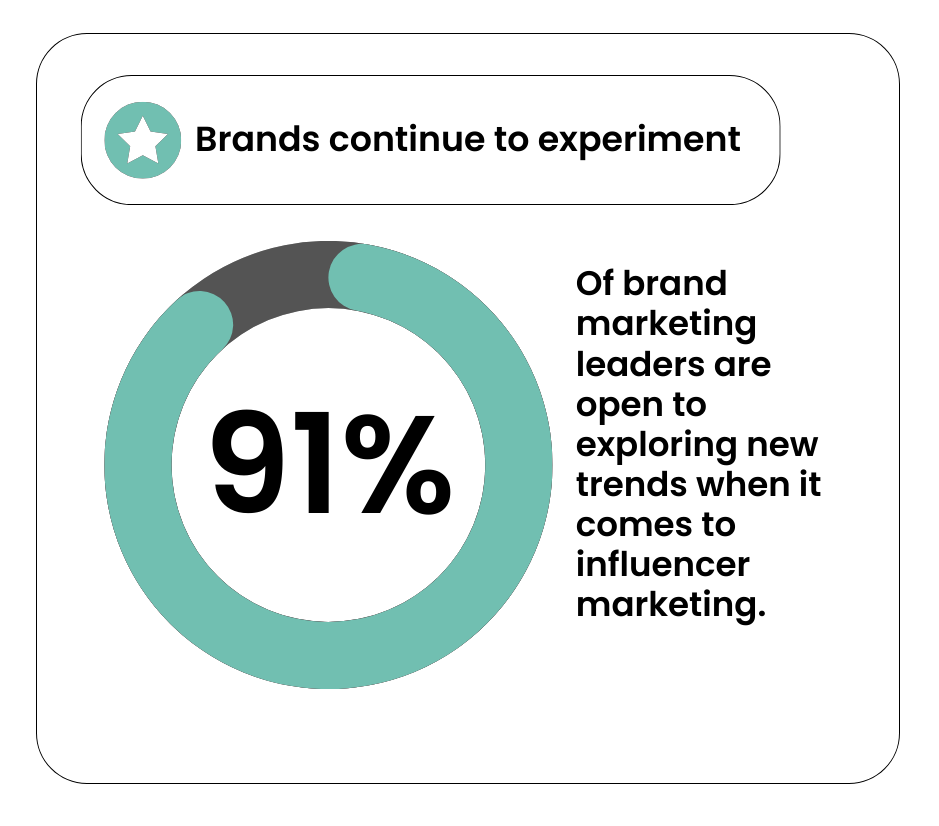
91% of brand marketing leaders are open to exploring new trends when it comes to influencer (creator) marketing. This is an excellent way for brands to step out of their comfort zones and create campaign content that will cut through the noise and inspire audiences. An easy way to do this is to lean into the creativity and expertise that creators bring to the table, as opposed to providing a prescriptive brief or campaign ask.
Certainly, the landscape is wide open for brands that want to expand their influencer marketing impact. Other major trends and technologies are driving fast growth for influence marketing and building new customer engagement channels:
5 Larger Influencer Marketing Trends
The creator marketing sphere is growing. As more brands choose to increase their creator marketing efforts and budgets, its critical to have a finger on the pulse of big changes happening in the space, such as technological advancements and shifts in creators’ and consumers’ wants and needs.
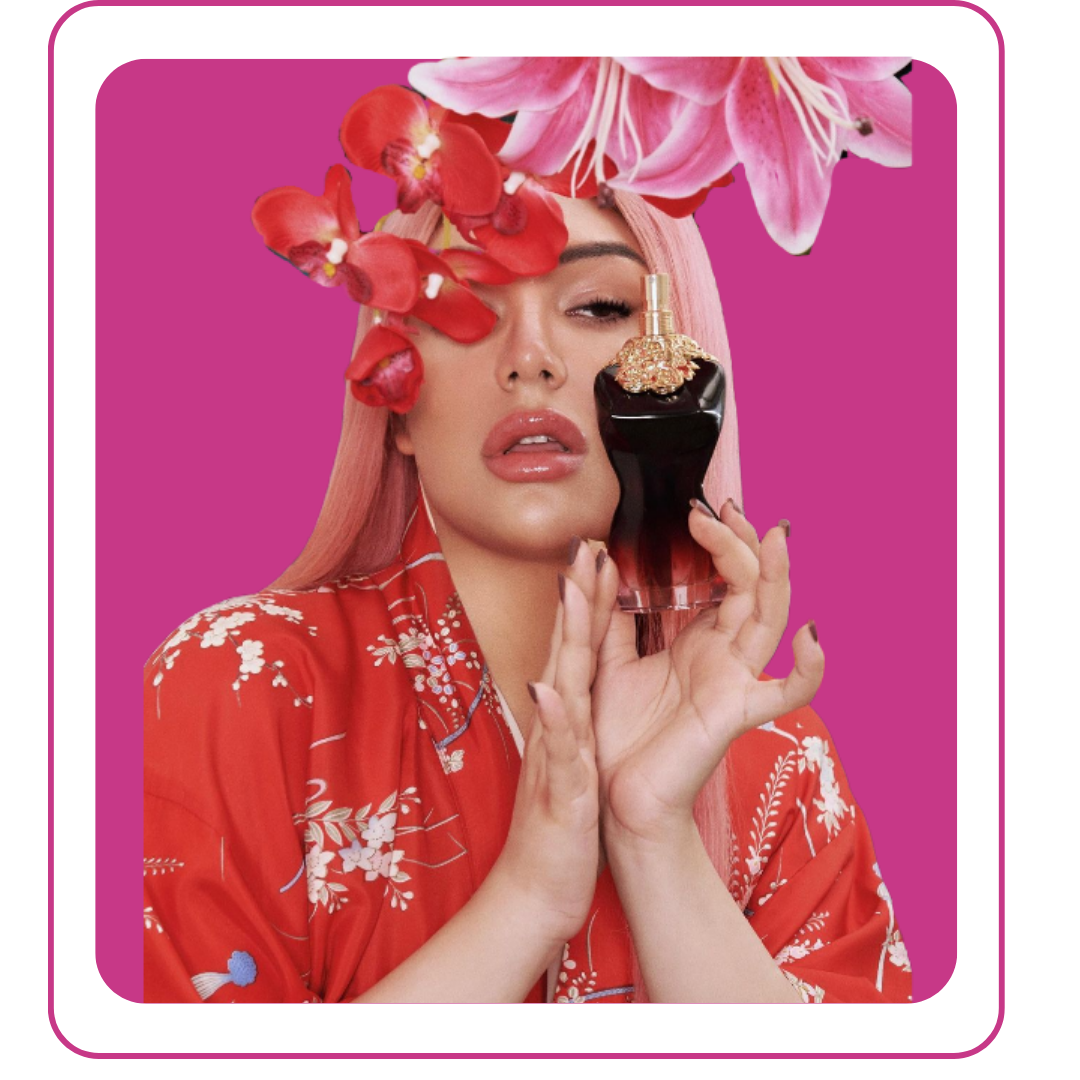
@alehilton x Jean Paul Gautlier
The Metaverse is taking shape
Meta’s infinite world of creator content and imagination is moving ahead as the company pivots away from traditional social media and towards virtual reality. Global metaverse spending is projected to reach $73 billion by 2024.
The goal isn’t perfection, it’s to be real
Curated, polished, and perfect content has taken a backseat to authenticity, relatability, and vulnerability within content. The growth of apps like TikTok and BeReal support this trend.
With an increase in demand, creators may expect more compensation
As more brands add influencer marketing to their budgets, and more creators figure out how to bring in larger audiences, the profits for creators will continue to grow. Being a professional influencer with a viable career is no longer just a dream for millions of creators.
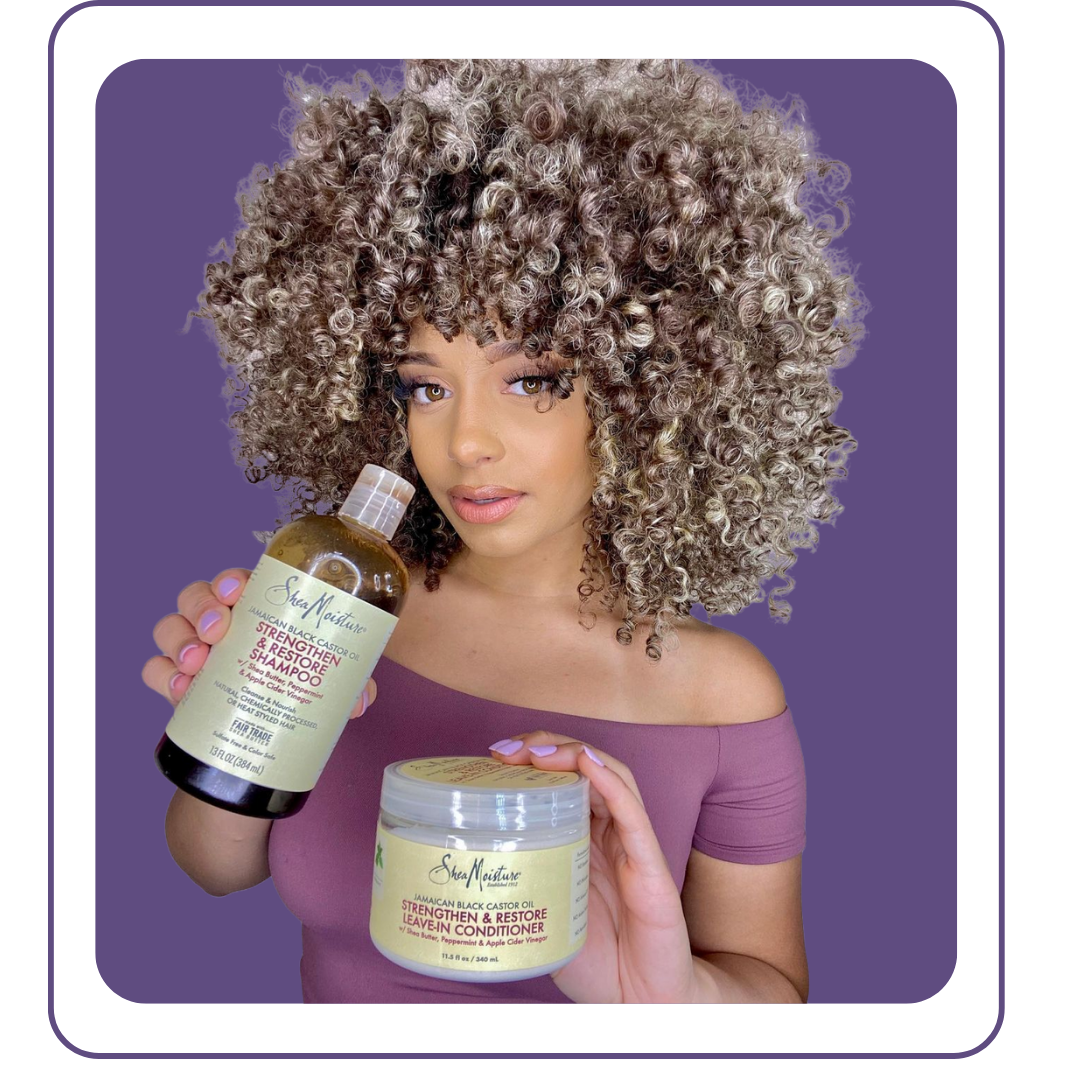
@katherine_josee x Shea Moisture
Nano and micro-creators will continue to rise
It’s not just the big creators who are getting bigger. Small nano and micro-creators are increasingly being targeted by brands because they reach niche audiences, are affordable, and have the greatest growth potential. In addition, platform algorithms have allowed smaller creators to reach broad audiences via the For You Page and/or Explore Tab. For that reason, many brands are prioritizing content DNA over audience size.
Creators can assist with content creation
As the creator economy grows, brands are quickly realizing the benefits of actively tapping into the extraordinary contributions of digital creators to scale their content needs. This expands brand- creator partnerships beyond a media buy.

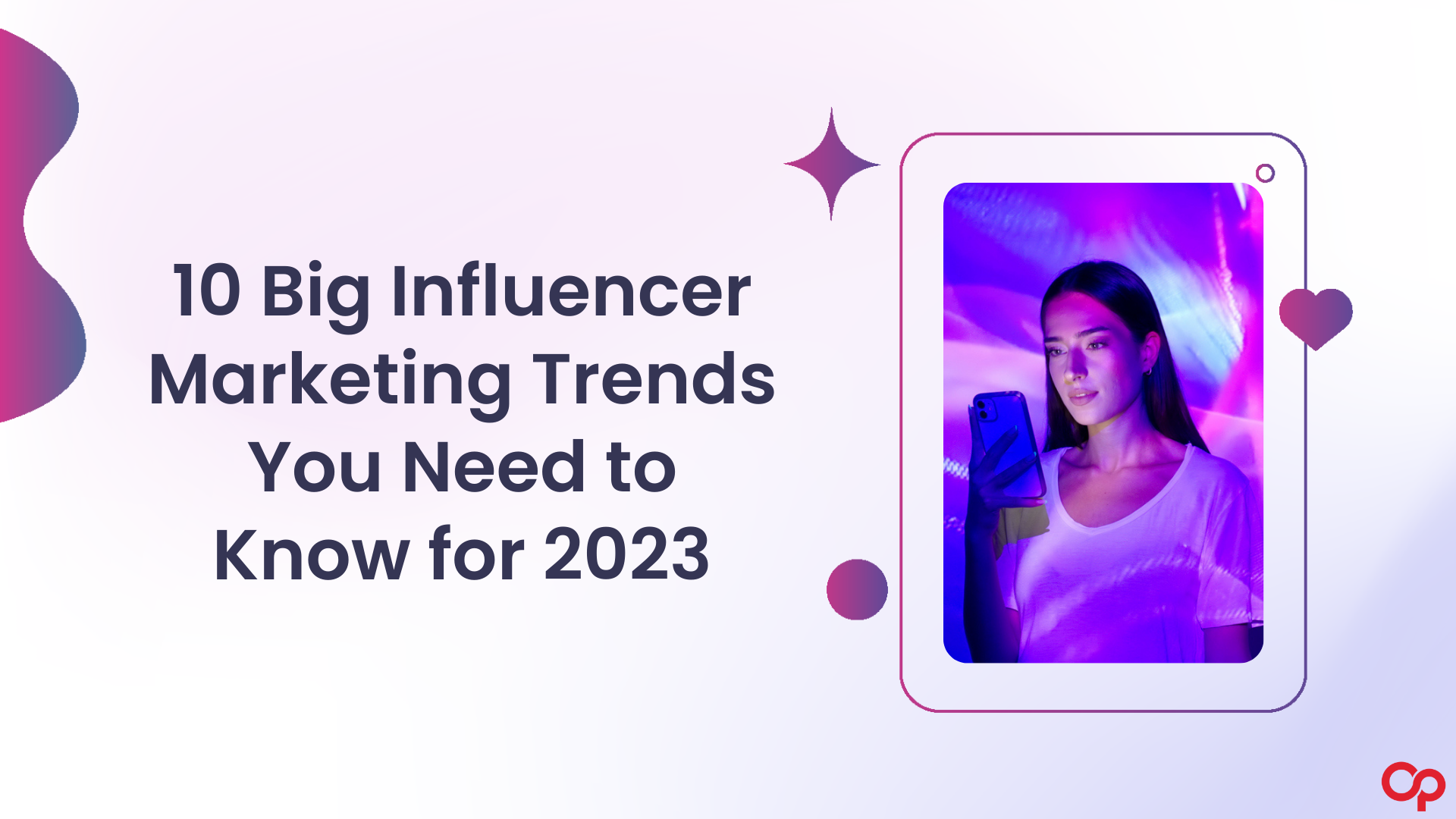
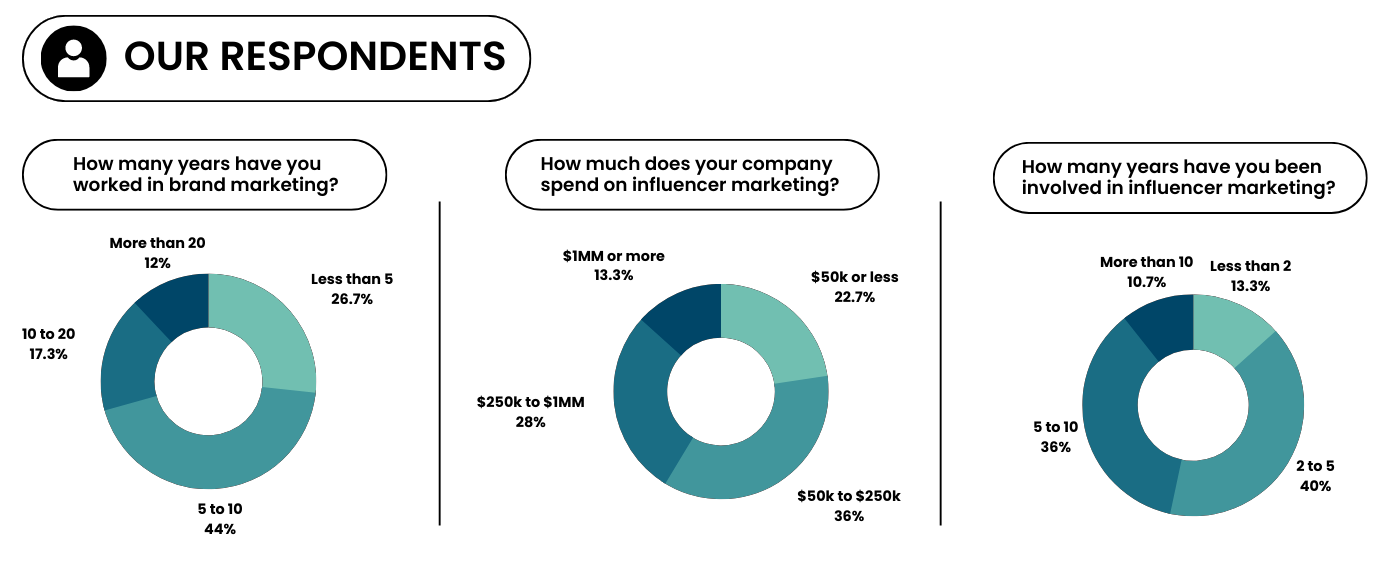
 “Tracking analytics and optimizing campaign performance is a common challenge we encounter. First party data is always the most reliable, but accessing it can be tricky. This past year, we integrated TikTok and Meta APIs to solve for this. The result? Real-time reporting with platform-direct first party data.”
“Tracking analytics and optimizing campaign performance is a common challenge we encounter. First party data is always the most reliable, but accessing it can be tricky. This past year, we integrated TikTok and Meta APIs to solve for this. The result? Real-time reporting with platform-direct first party data.”



